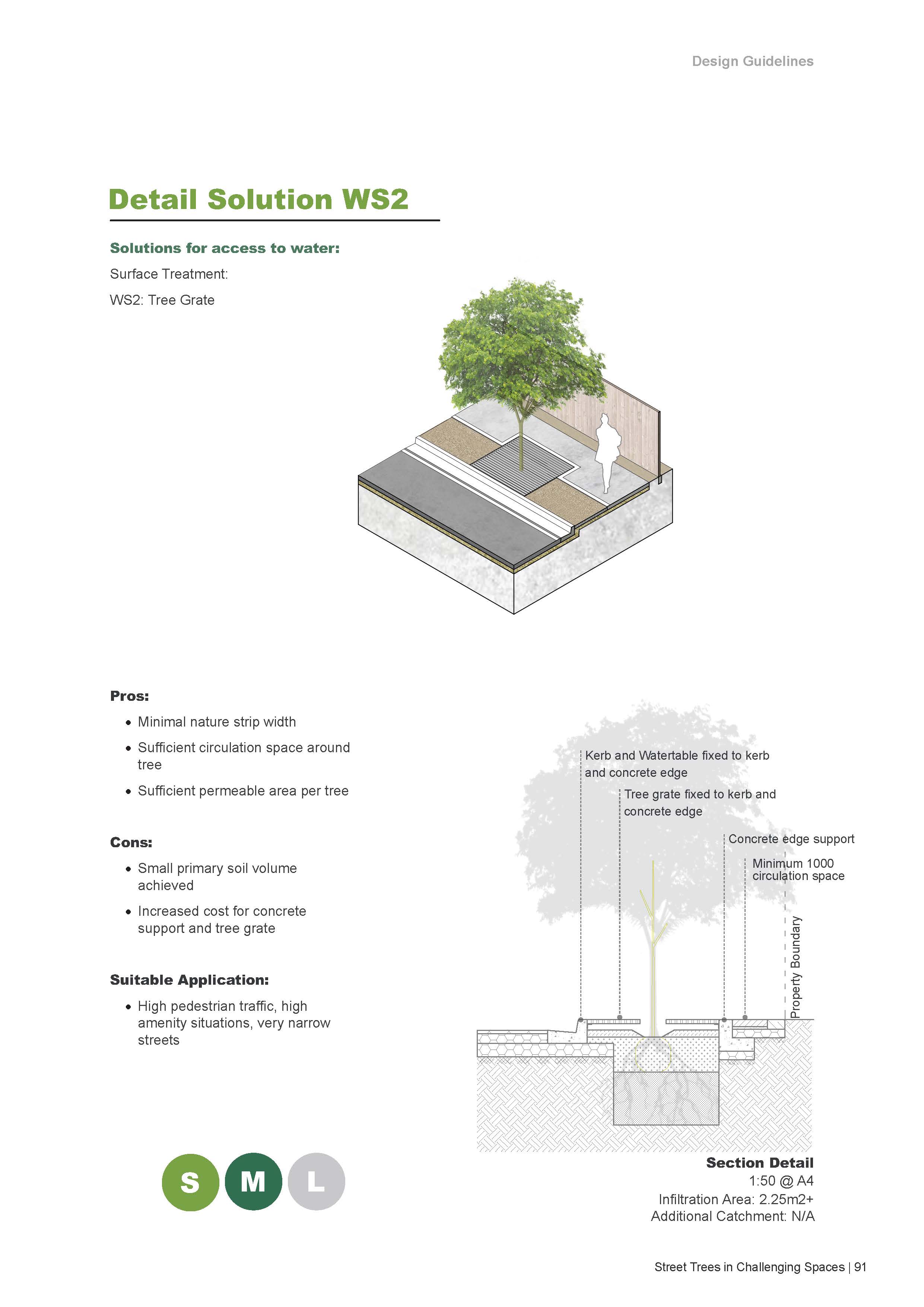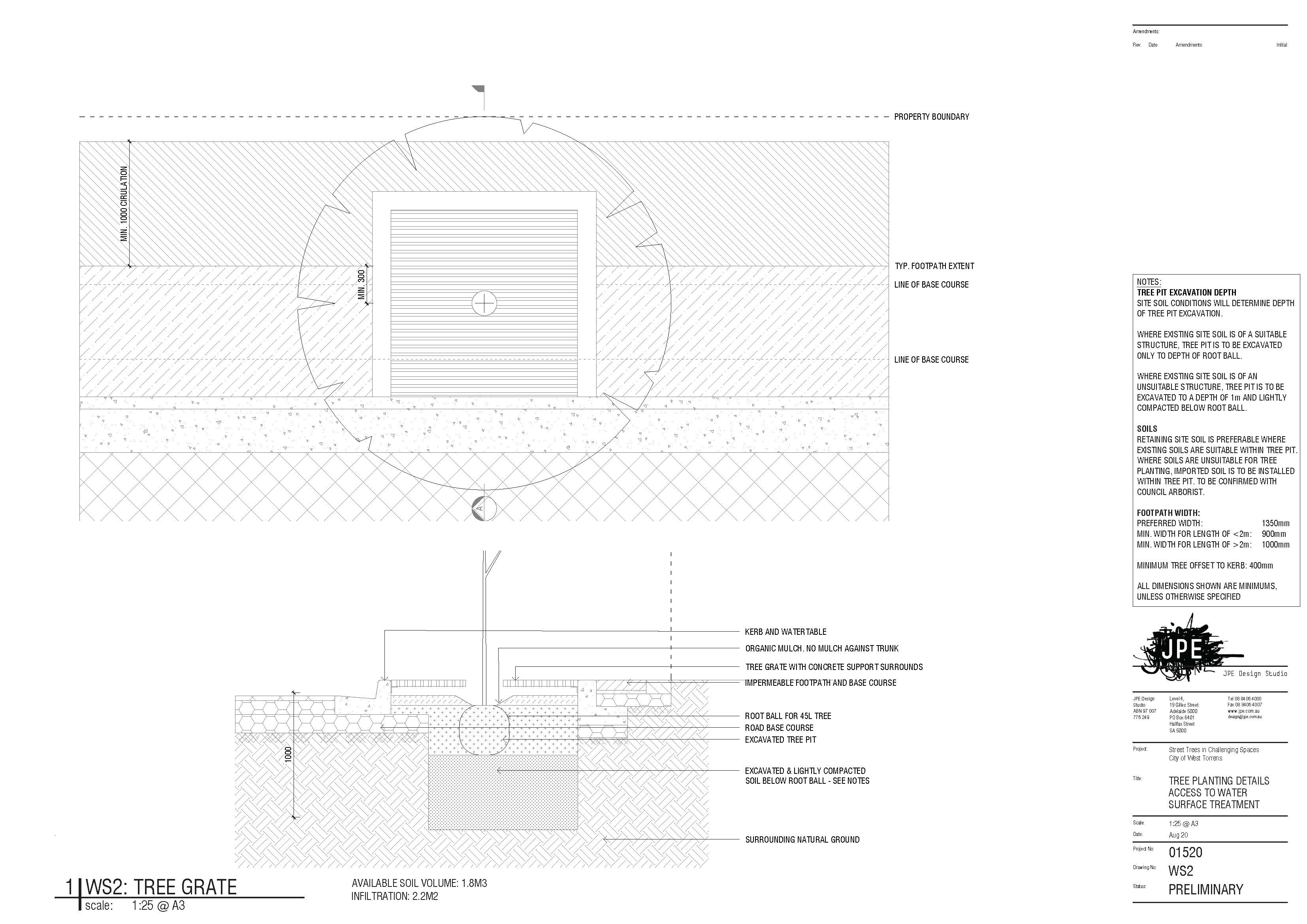L3. Revise design, engineering and maintenance standards to make
biodiversity the norm
Revising council standards to foster biodiversity
Council standards provides guidance for many things, and for good reason – they create consistency, reliability and efficiency. They define what plant species are used, how common public infrastructure (like footpaths, tree pits, and kerbs) are designed, and how trees, parks and gardens are maintained. However, when standards aren’t designed to support biodiversity, we incrementally produce landscapes that are not biodiverse. This also makes biodiverse design, construction and maintenance difficult, because it is a deviation from normal practice. Councils can fix this by revising these standards to support biodiversity at key project phases.

Three important examples to include:
1. Redefining standard planting palettes used in landscape design to include a broader range of native species in the context of a changing climate.
2. Revising standard landscape and engineering drawings to include understorey and midstorey plantings.
3. Revising standard maintenance practices and specifications to better align with the needs of layered, diverse planting.


Source Trees in Challenging Spaces Report